Ilha Grande & Paraty: Brazil's Costa Verde
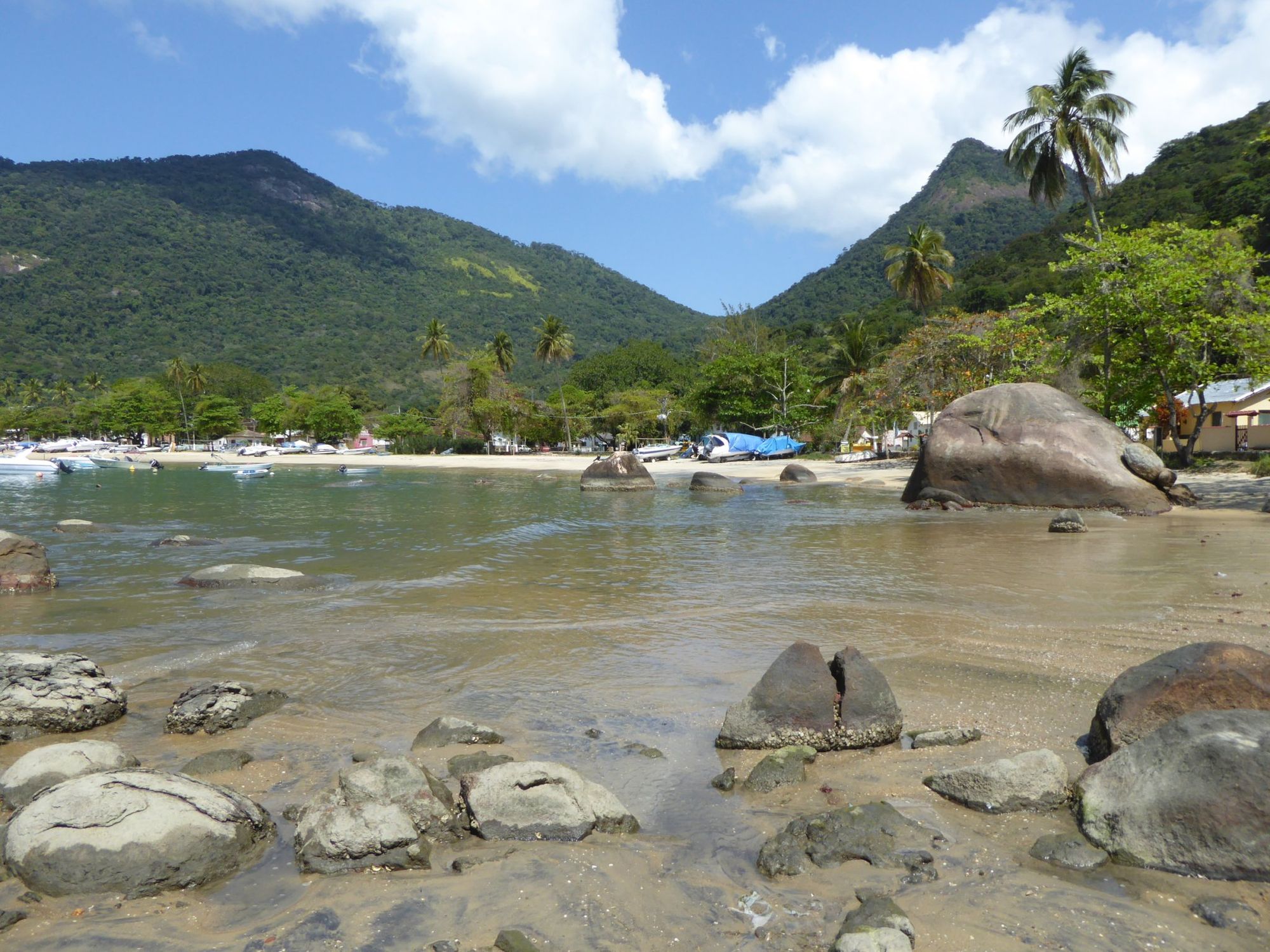
Brazil seems to be in a state of chaos at the moment.
The night after we arrived in Rio, the 200-year-old National History Museum burned down, destroying an estimated 90% of its priceless artefacts. A few days later the far-right presidential candidate Jair Bolsonaro was stabbed at an election rally in the town of Juiz de Fora, 125 miles to the north of Rio. The favourite to win October's election, the former president Luiz Inácio Lula da Silva, is currently in jail, and has been barred from standing. As we left Rio on the eve of Brazil's Independence Day, our taxi driver joked that there might not be anything to celebrate this year, as the declaration of independence had just gone up in smoke in the museum fire.
Yet all of this seemed to fade into the background as we stepped ashore on Ilha Grande, a wild and unspoilt island a few hours' drive south from Rio. Ilha Grande was a leper colony for many years, and later a prison, closed to the outside world, so the island remains remarkably undeveloped. There are just a handful of villages scattered around the coast, and there are no roads or cars on the island. The mountainous landscape is carpeted with thick foliage, one of the last remaining vestiges of the Atlantic rainforest that once covered this part of Brazil.
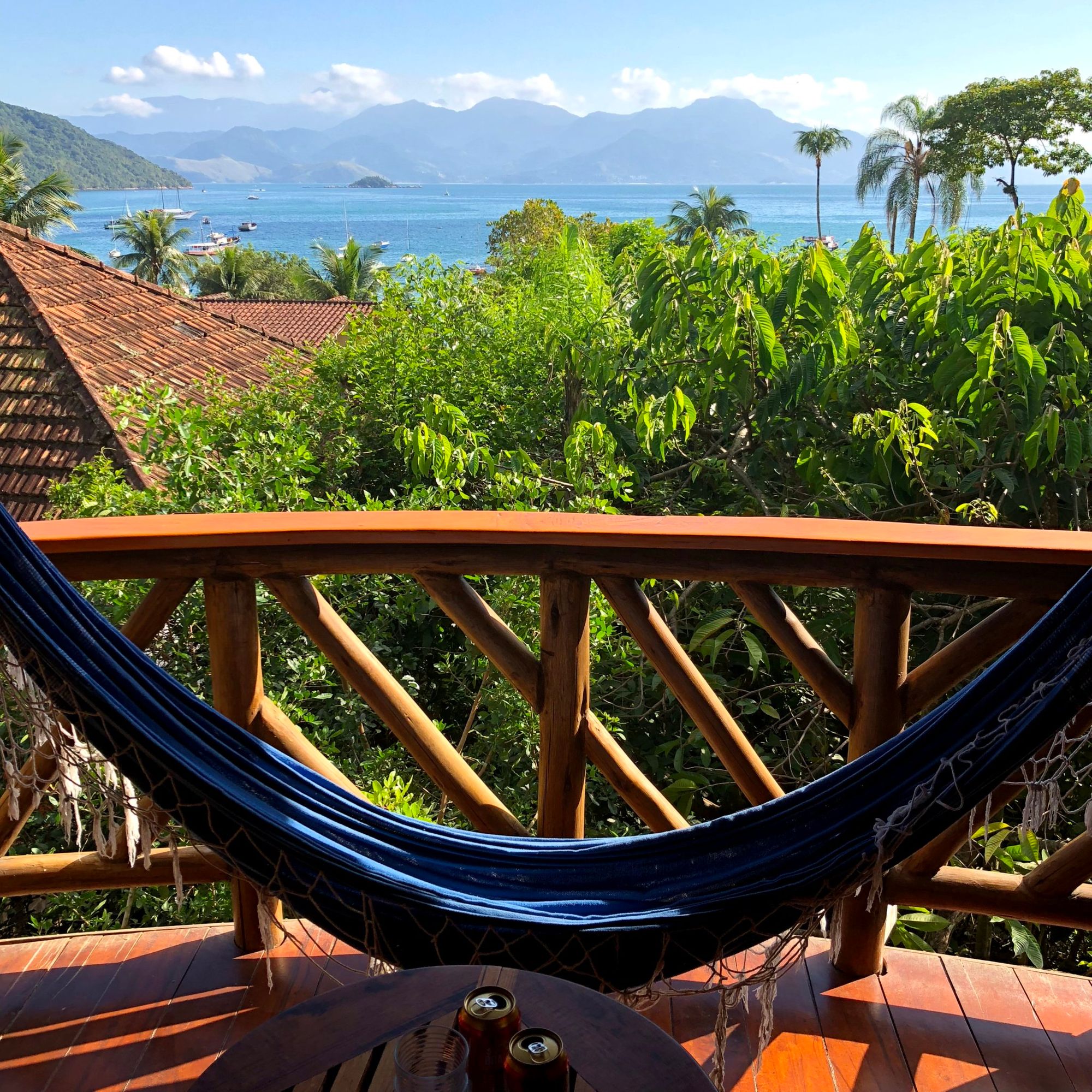
The main settlement on the island is Vila do Abraão, where we stayed in a secluded little pousada overlooking the bay. Our journey from Rio had been quite stressful, as the bus we planned to catch was fully booked and we subsequently missed the public ferry, but the moment we stepped off the pier in Abraão we realised we were somewhere very special. The village consists of just a few sandy streets, lined by tour agencies and restaurants pumping out reggae, samba and bossa nova. Everyone seemed to be ambling along in their Havaianas in a sort of tropical daze, like a tiny Caribbean island with a Brazilian twist.
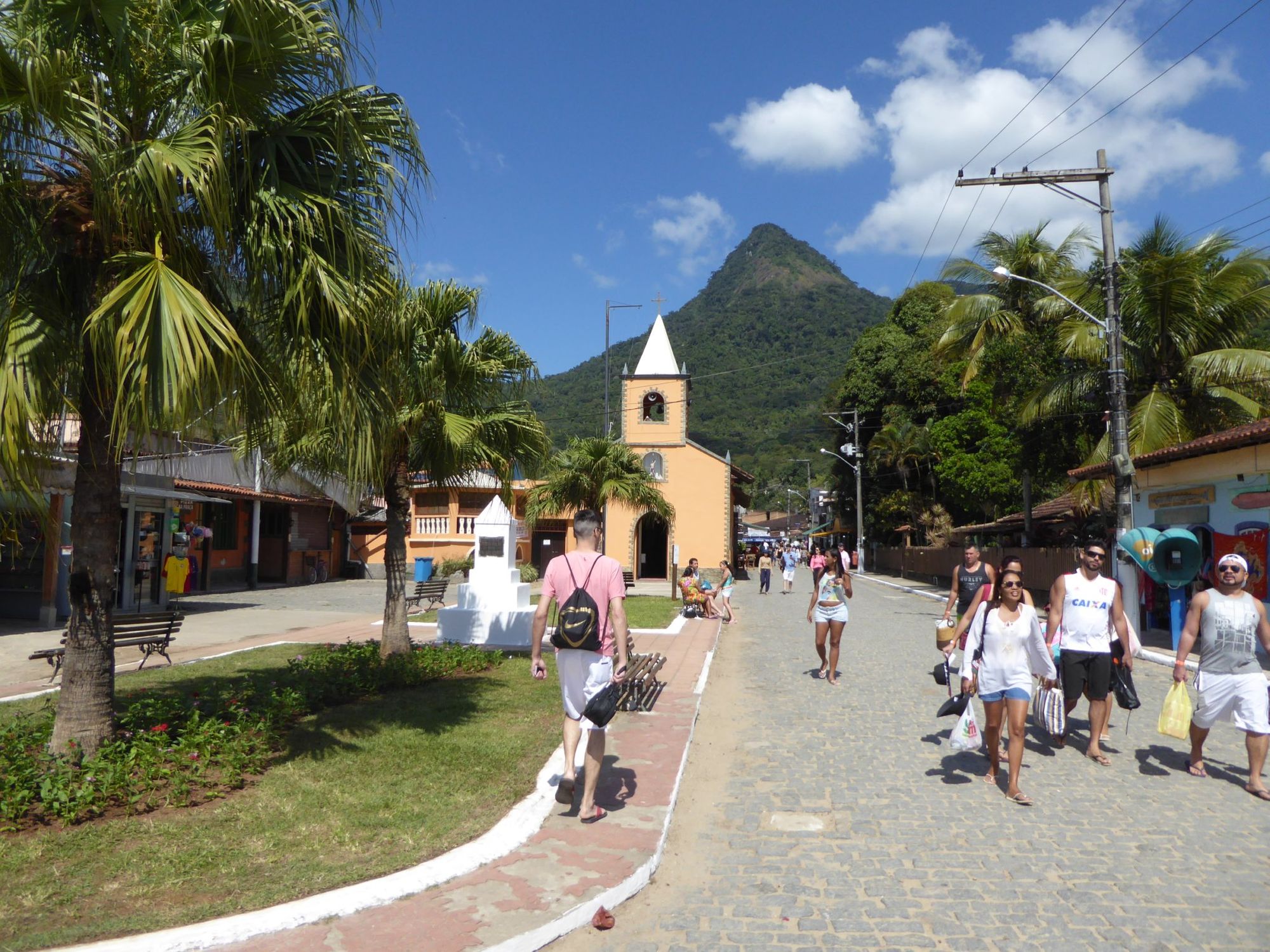
There are around 100 beaches on Ilha Grande, from tiny coves only accessible by boat to broad, sweeping bays. The most famous of the lot is Lopes Mendes on the southeast coast, frequently cited as one of Brazil's most beautiful beaches. The owner of our pousada, Sébastien, told us that it was a fairly straightforward three-hour hike along a well-marked trail, so we bought ourselves a picnic lunch in Abraão, tooled up in our spoddy new hiking gear, and set off along the coast.
After a gentle introduction following the trail across a small beach, the route veered inland and quickly became a steep ascent. The jungle canopy closed in overhead and we found ourselves scrambling over huge boulders and tree roots, clutching hold of vines and branches for balance. As Polly set a steady pace ahead of me, I quickly started to doubt the efficacy of my pre-trip fitness regime, as sweat came gushing out of my head like Iguaçu Falls. Eventually we reached the summit of this first hill, and took a moment to admire the stunning view over the cerulean sea below.
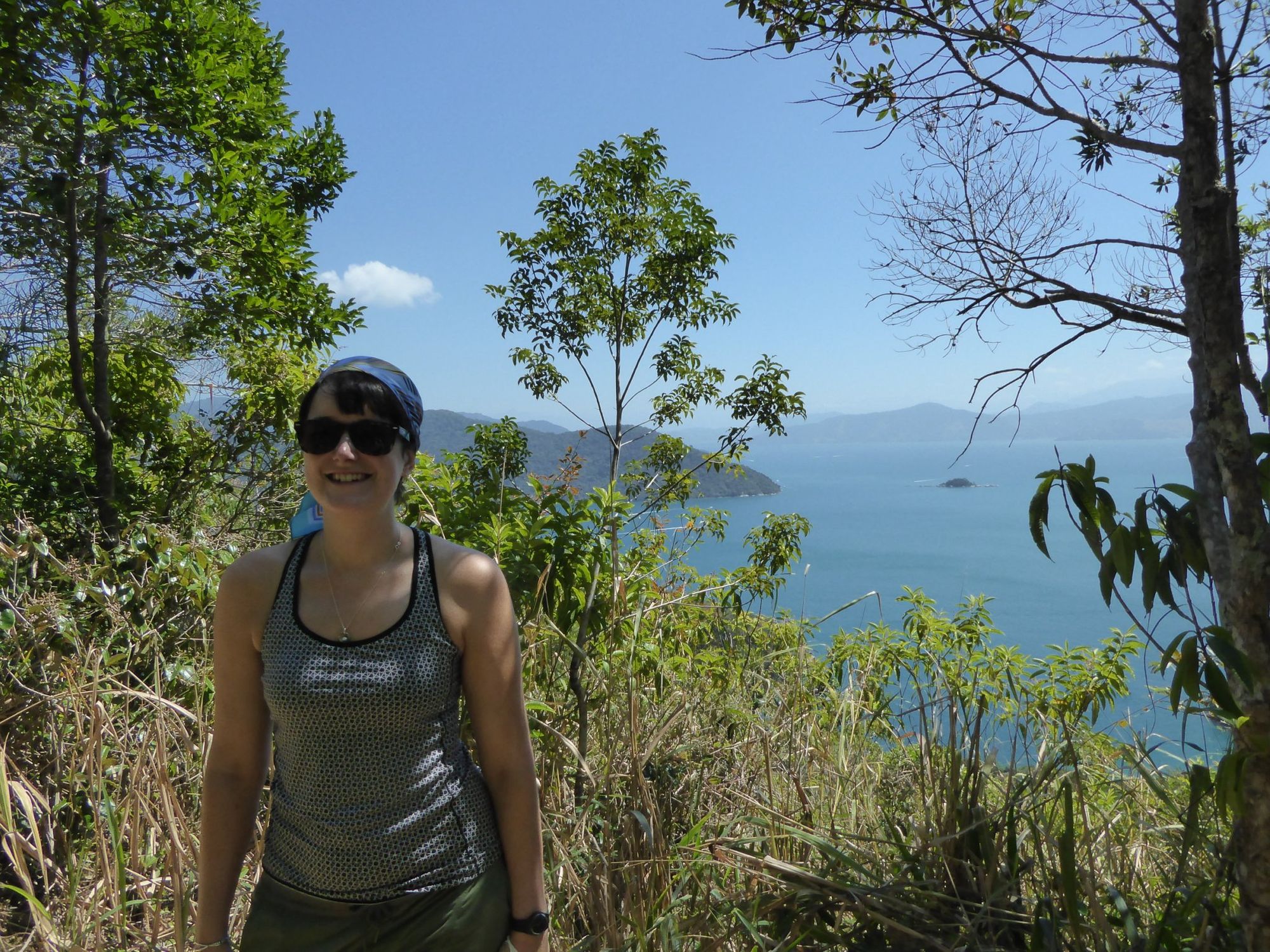
Descending was much easier, though the path was still treacherous in places. I began to appreciate the amazing rainforest around us, as we hiked past enormous granite boulders, clumps of ferns and weird epiphytes clinging to the trees. We saw irridescent blue butterflies the size of small birds, and hummingbirds the size of butterflies. At the bottom of the track we emerged onto Palmas beach, where we had to wade barefoot through a saltwater channel before climbing up some more rocks and ascending another, slightly smaller hill.
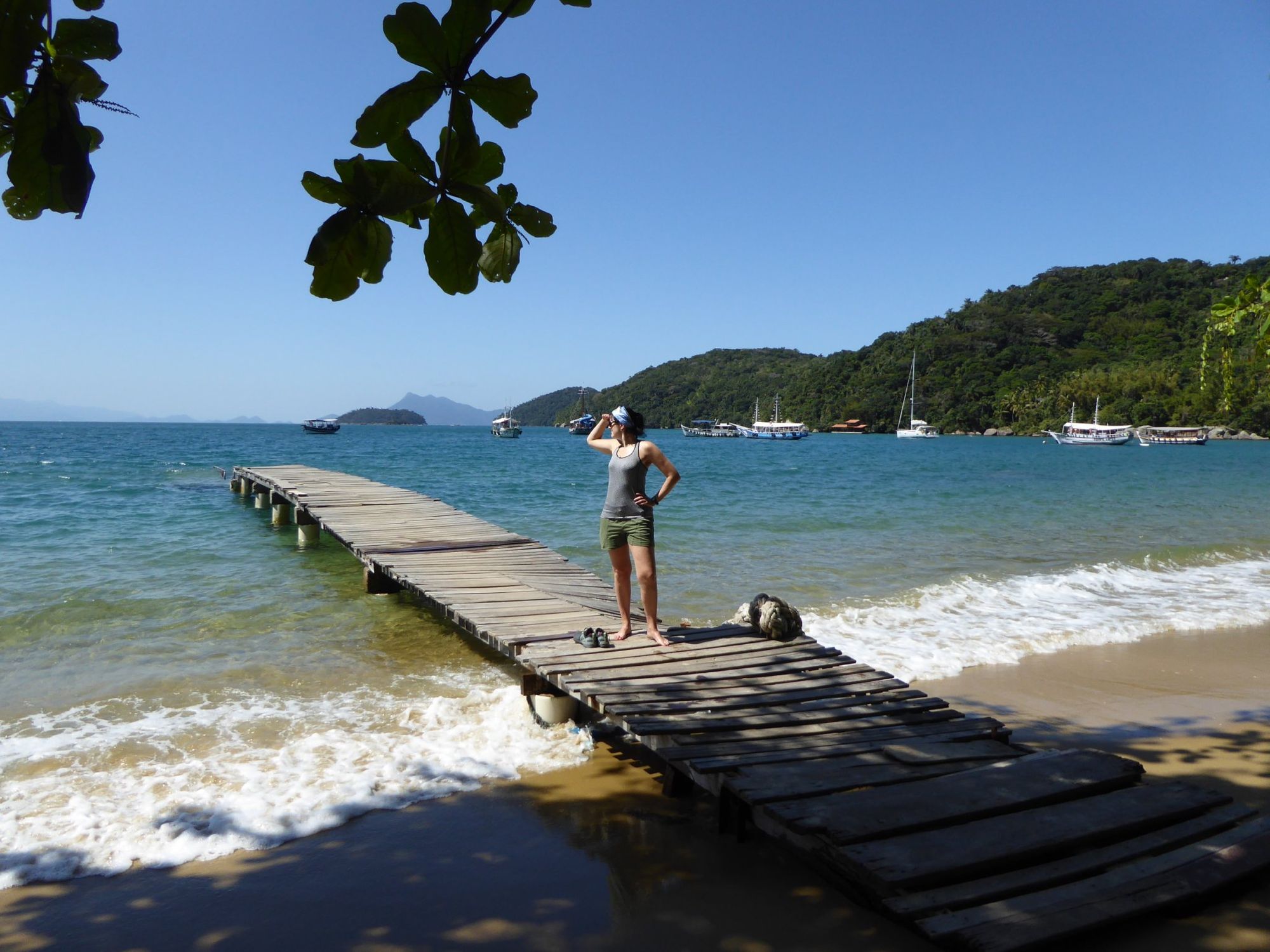
The walk was more challenging than we expected, and while we were huffing and puffing in our hiking shoes, merino wool socks and quick-dry trekking gear, the locals were skipping past us in swimwear and flipflops, the smell of marijuana occasionally trailing in their wake. We steadily inched our way down slippery slopes criss-crossed by gnarled roots and creepers, but the Brazilian approach to the downhill sections was to break into a light jog. We soon reached Pouso, the site of another beach where taxi boats deposit day-trippers who want to get to Lopes Mendes without doing the hike.
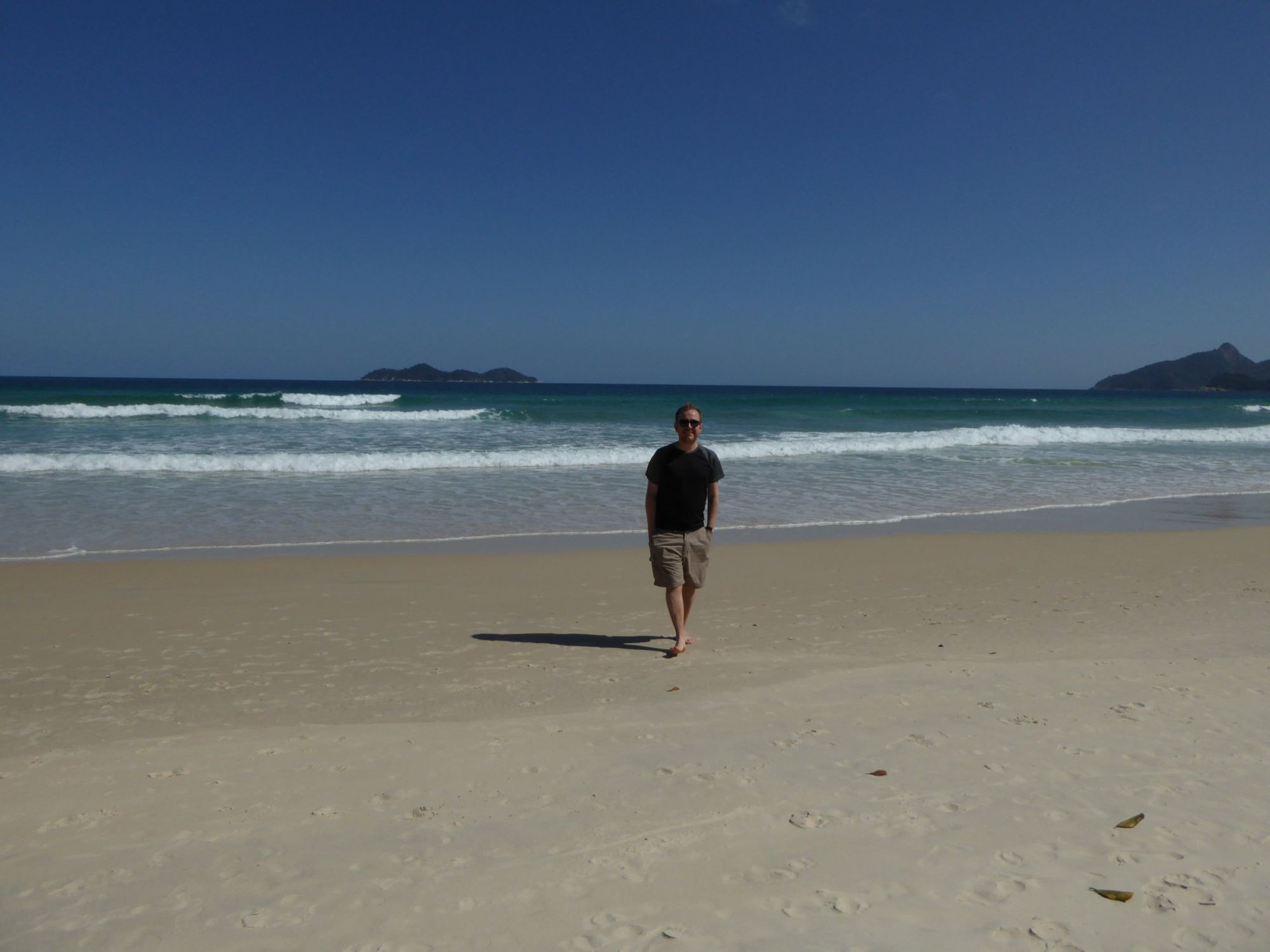
Finally we traipsed over one more hill before arriving at Lopes Mendes, and it instantly became clear why this is the most popular spot on the island. The beach stretches for nearly two miles around a curving bay, a perfect picture postcard scene of powder-white sand, lilting palm trees and up-the-arse bikinis. The beach is on the rougher Atlantic side of the island, so it's not great for swimming, but the crashing surf only added to the drama. We wandered down the beach away from the busy section by the entrance, and found a quiet spot to enjoy our picnic and the incredible views.
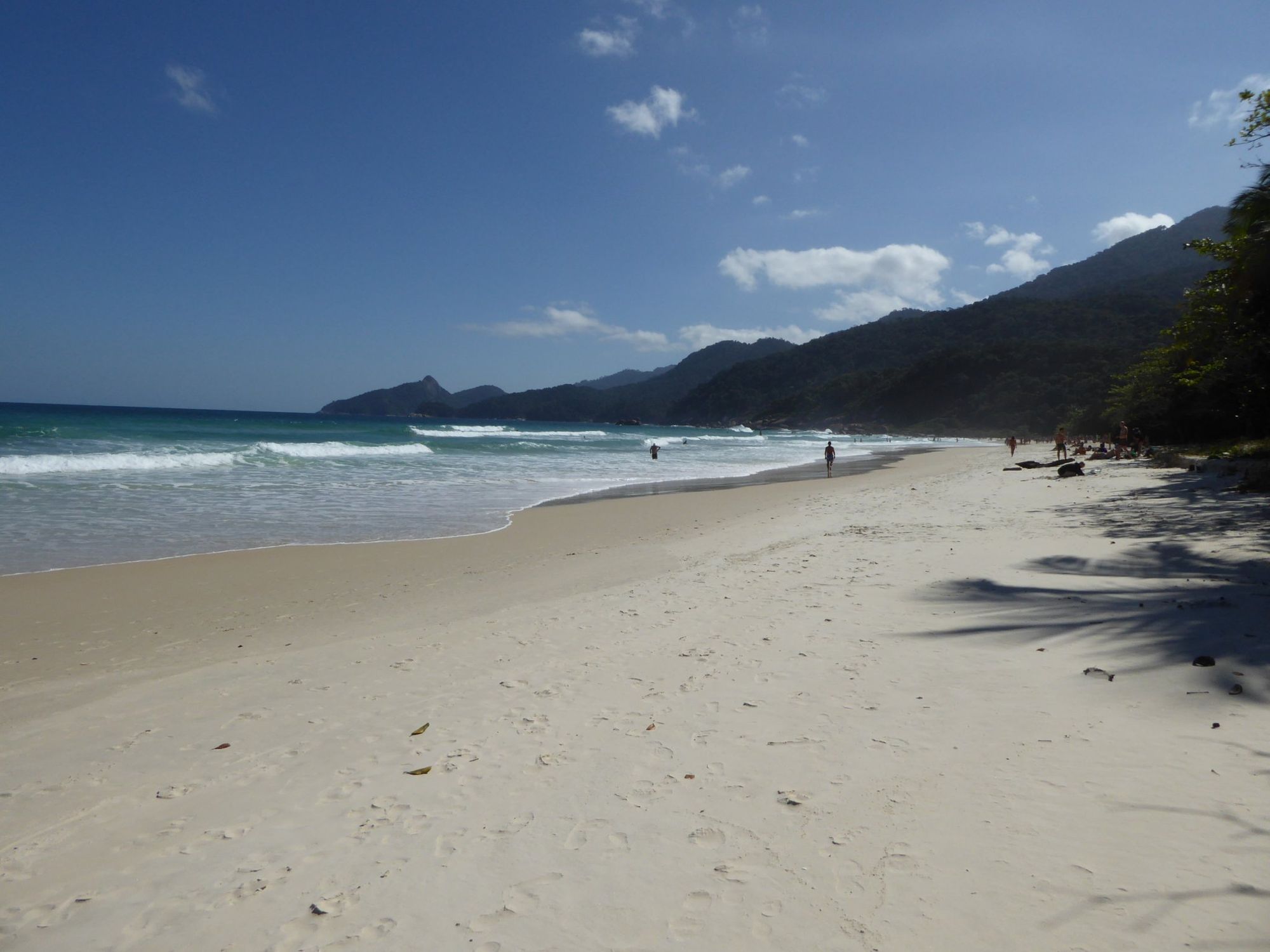
Originally we had thought that we might walk back to Abraão, but that was before we discovered how tough the trek was. Instead we joined the queue on Pouso beach for the 'slow boat' to Abraão, anticipating a tranquil cruise along the coast. After boarding it quickly became apparent that there were far too many people crammed onto the boat, and the captain instructed passengers to spread out around the deck to balance out the weight as we set off. The ride was initially quite smooth, but as we entered an open stretch of sea the ship began lurching from side to side, waves breaking over the bow and swilling around our feet. The boozed-up Brazilians on board cheered each time we hit a big wave, while we nervously eyed the clearly insufficient number of life jackets hanging above the deck.
Thankfully the waves calmed as we rounded the eastern tip of the island, and we were able to enjoy the rest of the journey. We saw frigate birds soaring overhead, brown boobies diving for fish, and weird cacti clinging to the cliffs. Arriving back in Abraão, we felt relieved to have survived the trip, and reflected on our propensity for choosing terrifying modes of transport on holiday.
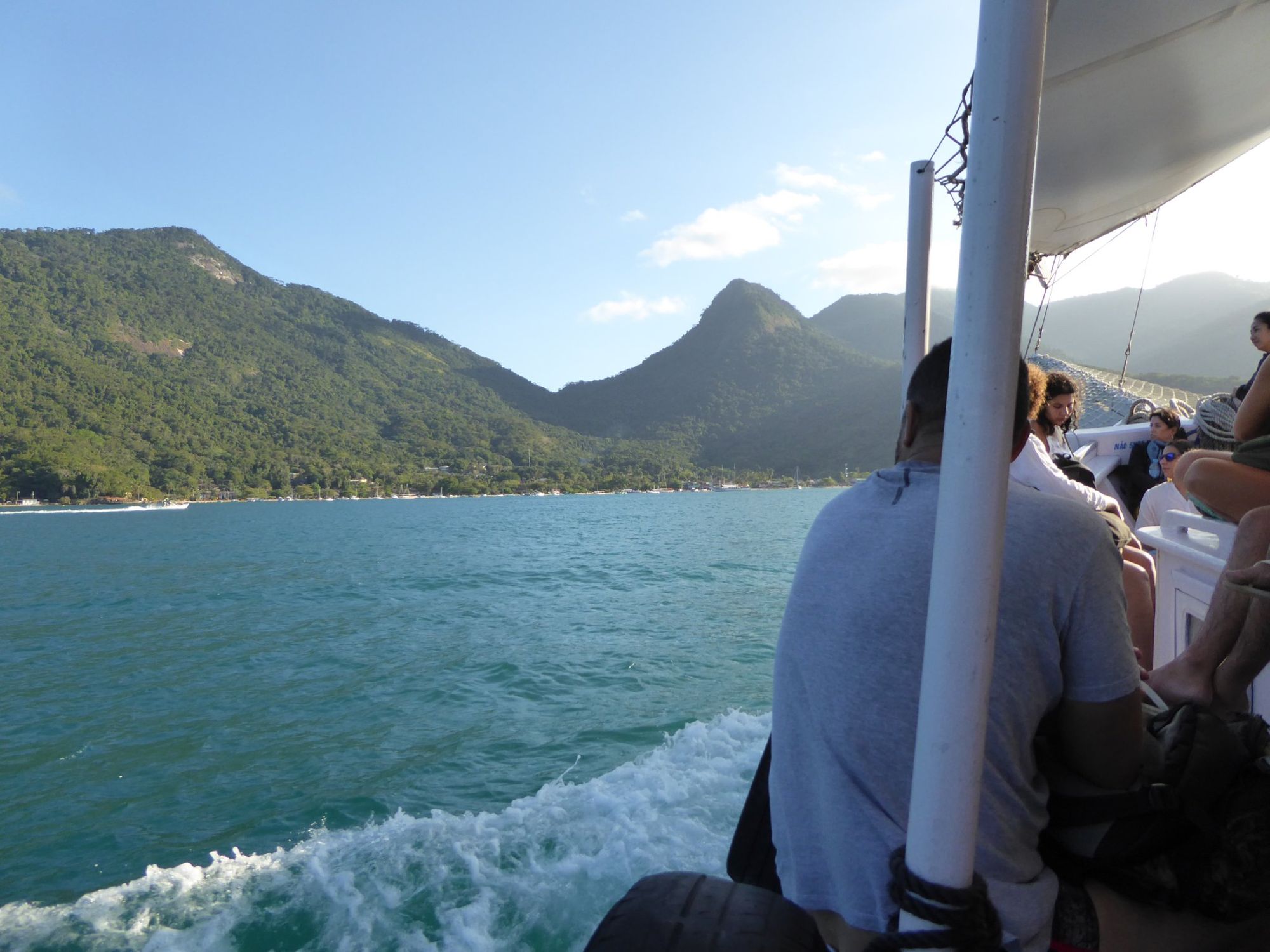
Lopes Mendes was spectacular, but it wasn't my favourite beach experience on Ilha Grande. The day after our hike, we walked to a smaller beach called Crena, only half an hour from our pousada. The walk was a little bit more strenuous than your standard seaside stroll, and once again we had to clamber over boulders and wade through the sea in places. We were also joined on the walk by one of the many dogs that roam free around the island, a slightly mangy-looking mutt who welcomed us to Crena beach by curling out a little turd on the path in front of us.
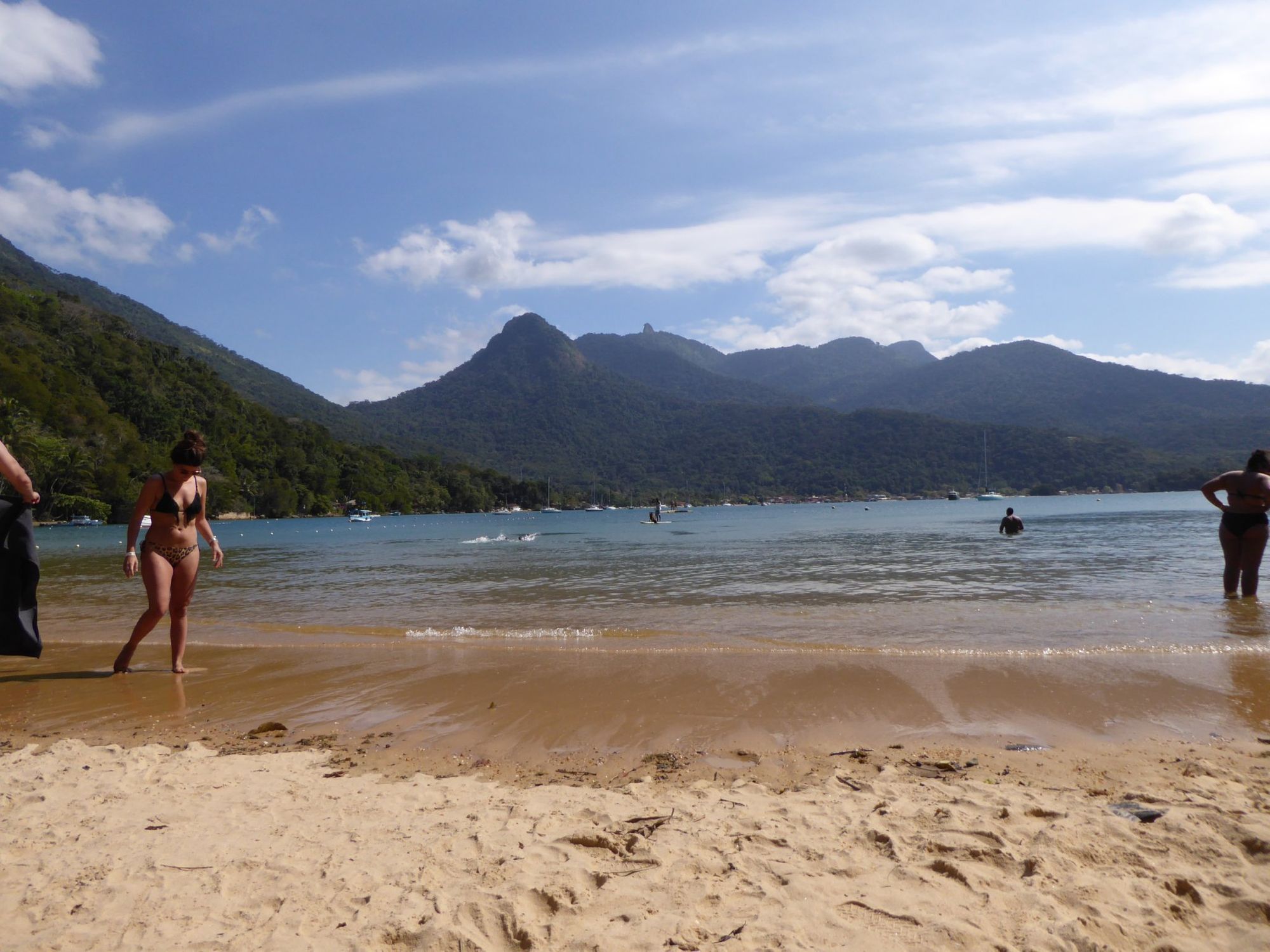
The beach was on the north side of the island, so the water was much calmer than Lopes Mendes and perfect for swimming, with fantastic views back across the bay towards Abraão. We enjoyed a chilled out morning on the beach, cooling off every now and again in the sea, where shoals of little green fish swam in the shallows. Just as we were about to pack up our stuff and head back to Abraão, I noticed the people around us laughing and pointing out to sea. After a moment I spotted him: a man in a vest emblazoned with the words 'Taxi Boat', slowly crossing the bay on a stand-up paddleboard, with a dog sat serenely on the front of the board enjoying the ride.
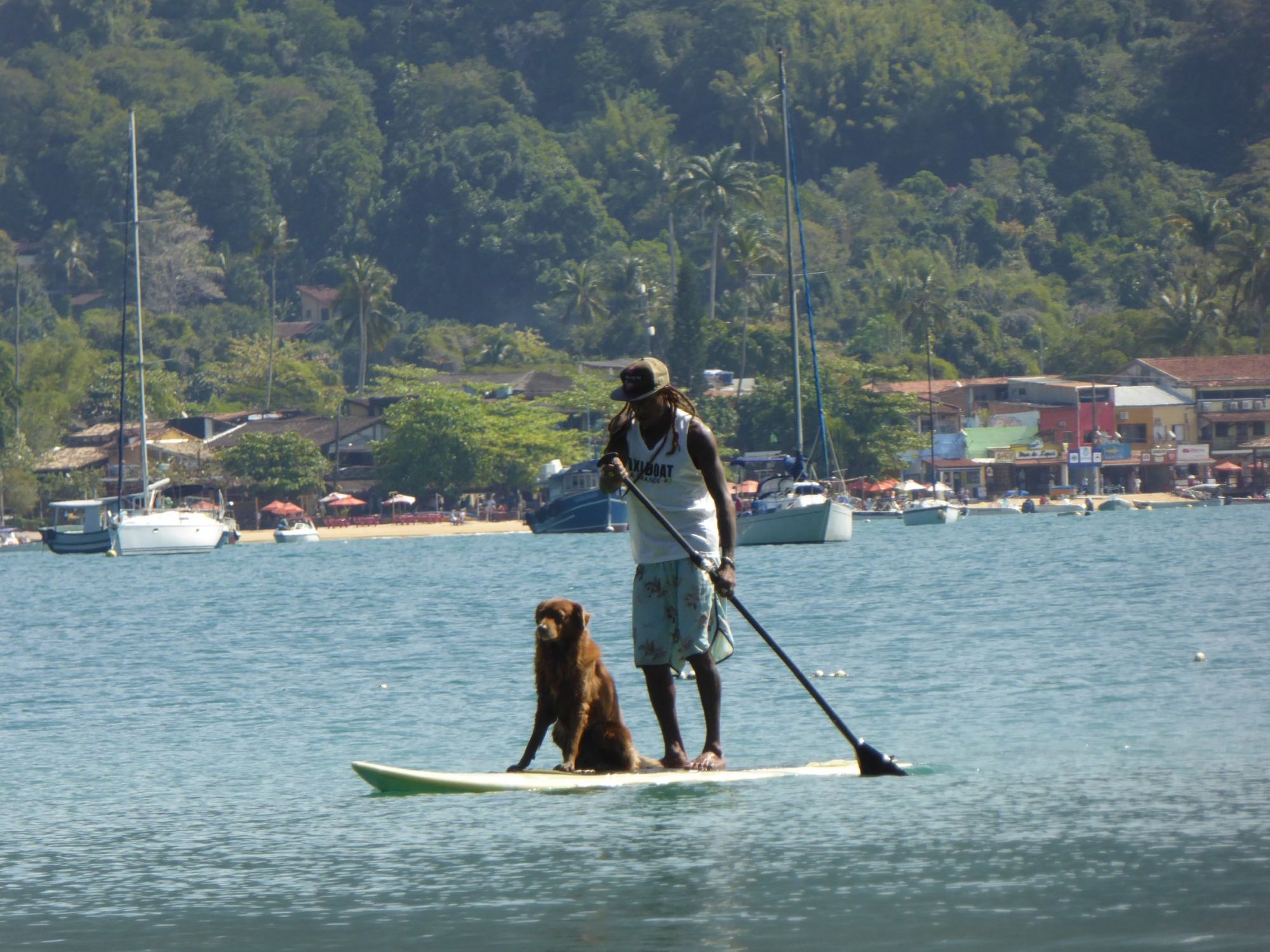
After four days on Ilha Grande we were well and truly relaxed into the rhythms of island life, and we were reluctant to leave, but our next destination on the Costa Verde beckoned. After crossing back over to the mainland by boat it was a three-hour ride in a cramped minibus down to Paraty, an old colonial town that used to be the principal port through which the Portuguese shipped gold plundered from the mines of Minas Gerais.
We arrived just as the sun was setting, so our first foray out into town was after dark. The whole of Paraty's historic centre is a UNESCO World Heritage Site, and the streets are paved with giant ankle-breaking cobblestones the size of small boulders. The town seemed quiet, perhaps unsurprising on the Monday after the Independence Day holiday weekend, and we had a nice meal and a couple of drinks before retiring for the evening.
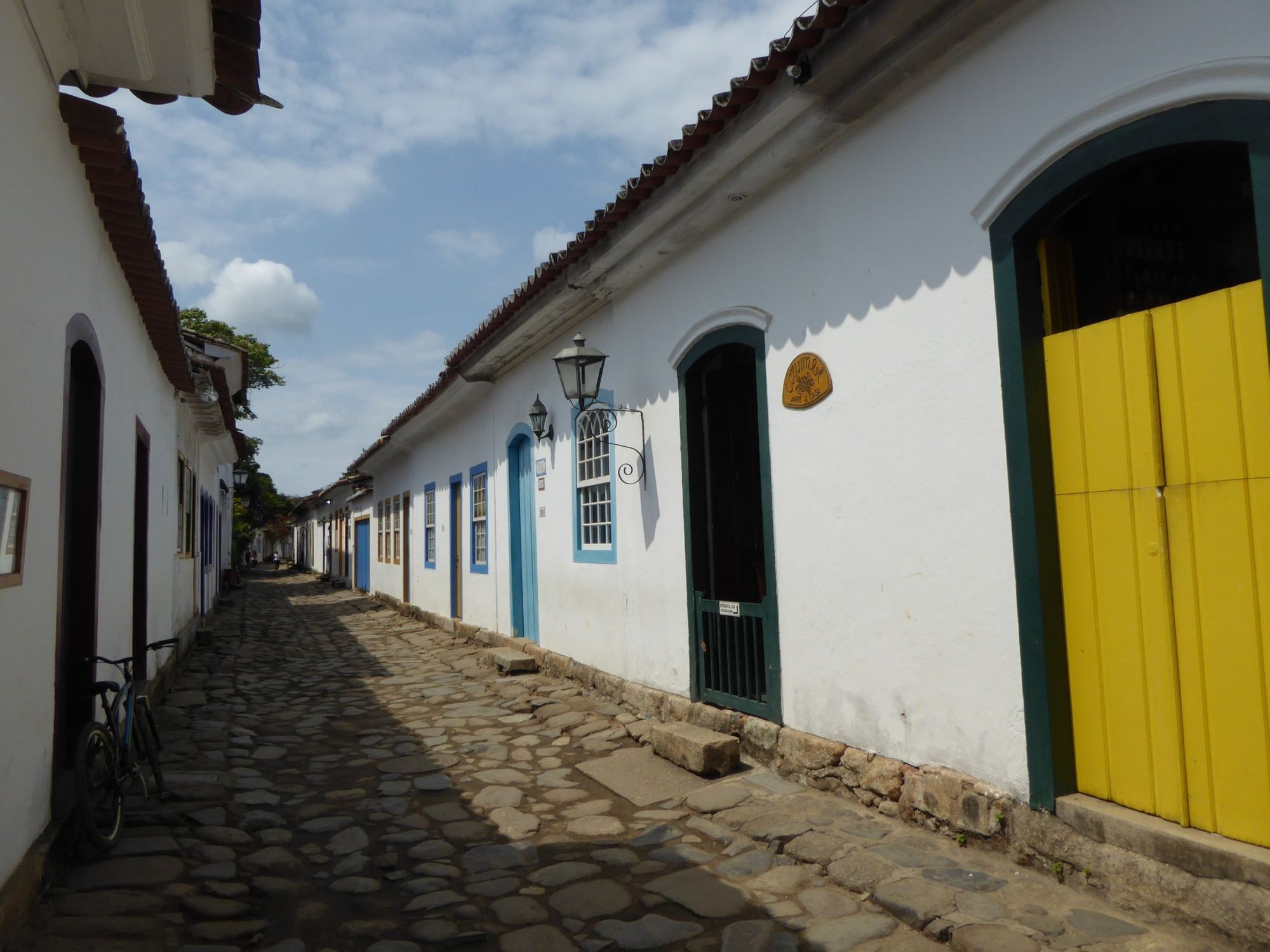
The sunshine and clear skies of the following day revealed the town in all its glory, a beautiful ensemble of whitewashed walls, terracotta tiles and brightly painted doors and window shutters. North of the centre are a couple of decent beaches; we walked most of the way along Jabaquara beach, spotting wildlife including vultures and little red-clawed crabs en route. We had a cold drink at a beach bar before heading back into town for lunch, and spent a couple more hours exploring the arts-and-craftsy shops, cute little churches and quiet streets where horse-drawn carts occasionally clattered along the cobbles.
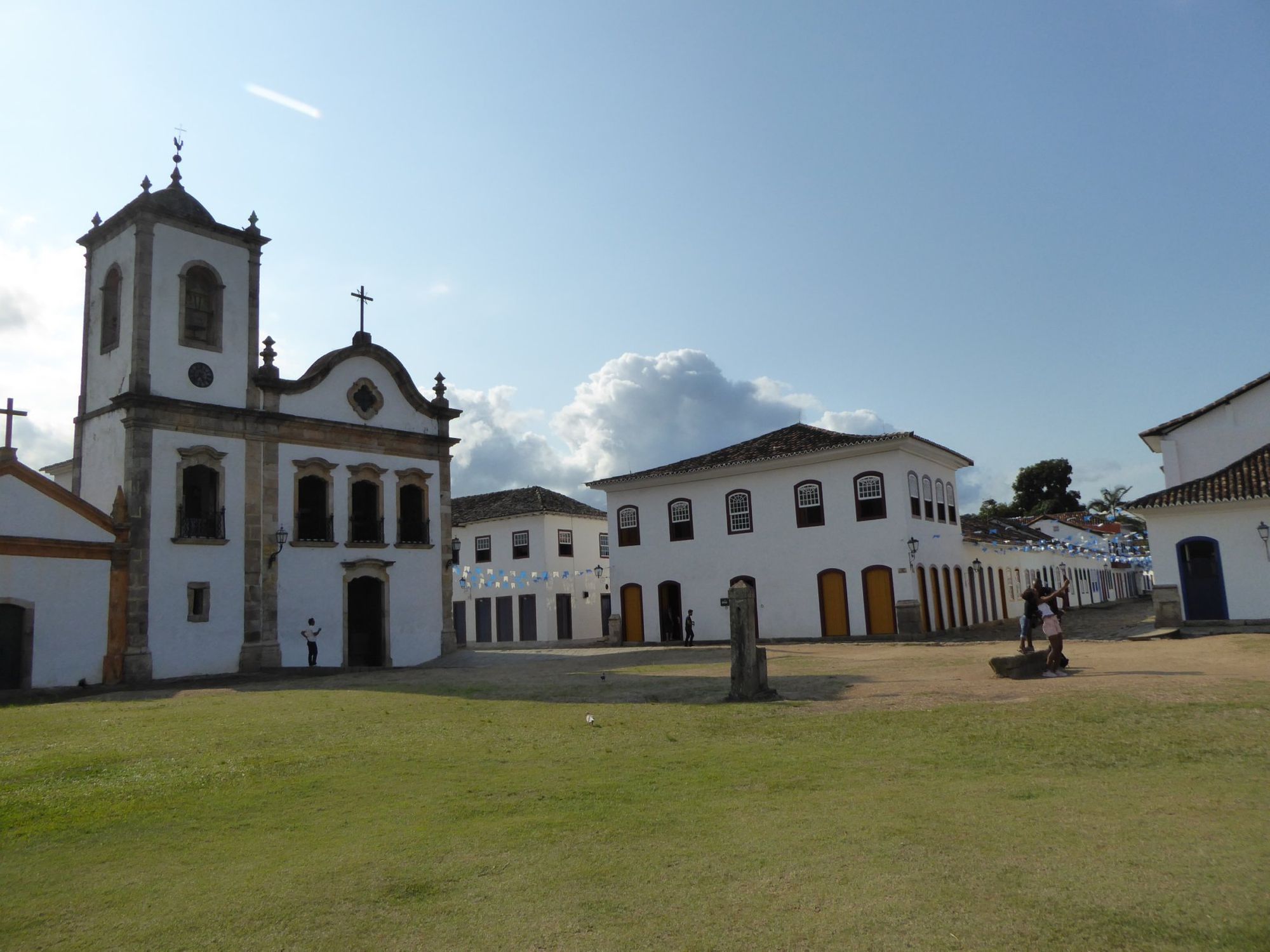
There isn't a huge amount to do in Paraty, but it's been nice to have a few days here to relax and do boring things like laundry and buy bus tickets. Tomorrow we're travelling another six hours southwest to São Paulo, the biggest city in the southern hemisphere, which promises to be a very different experience to the week we've spent taking things slowly on the Costa Verde.

